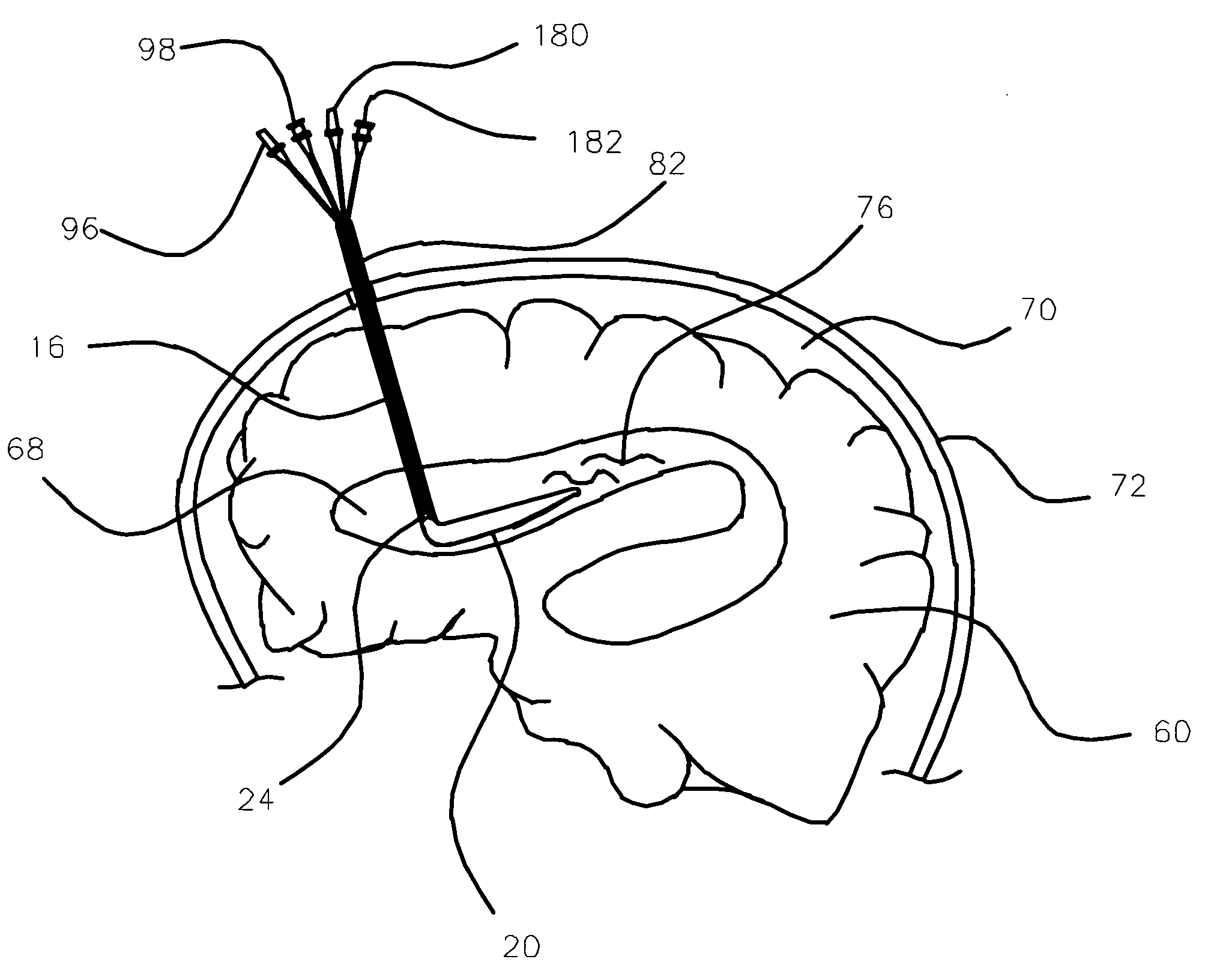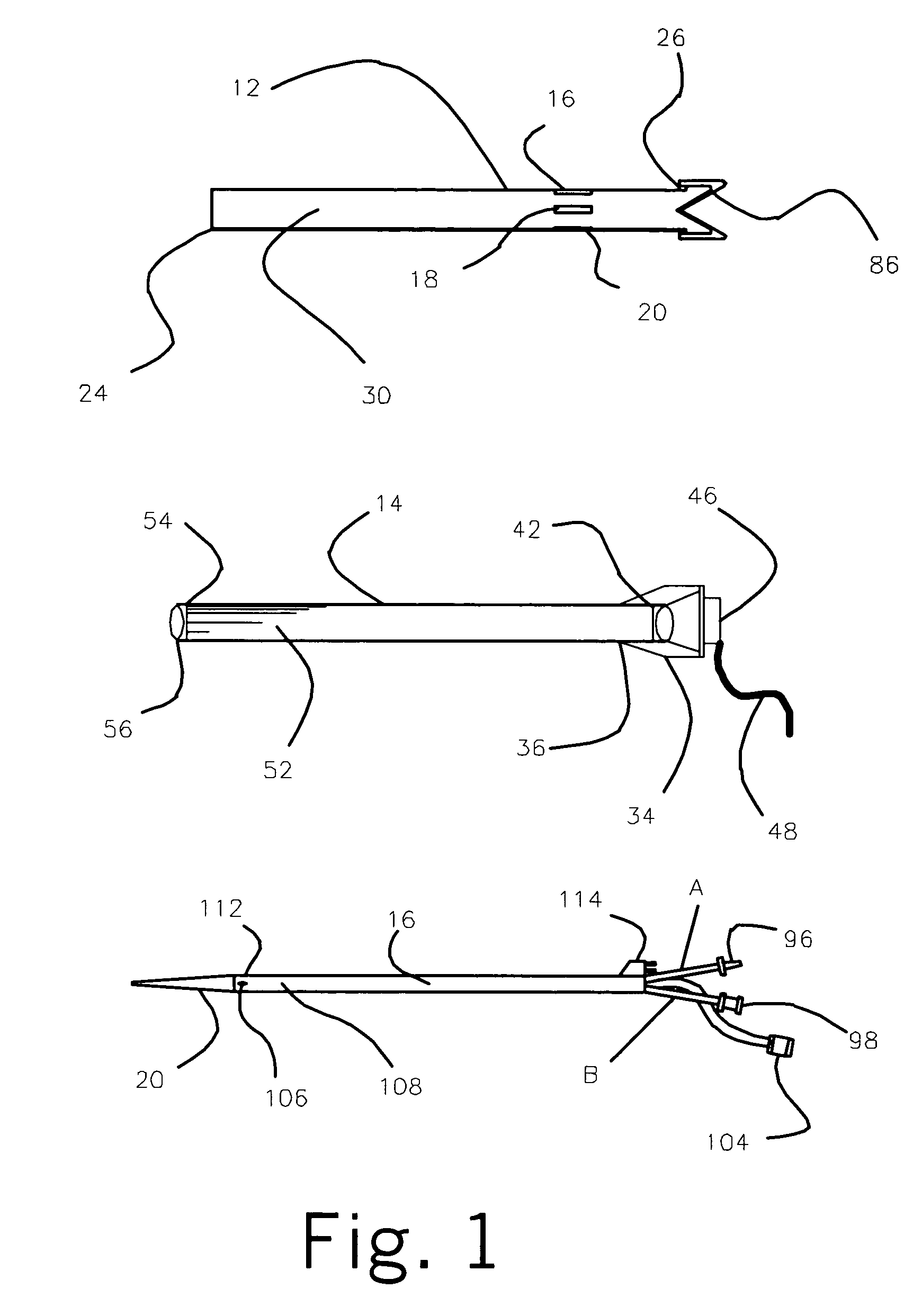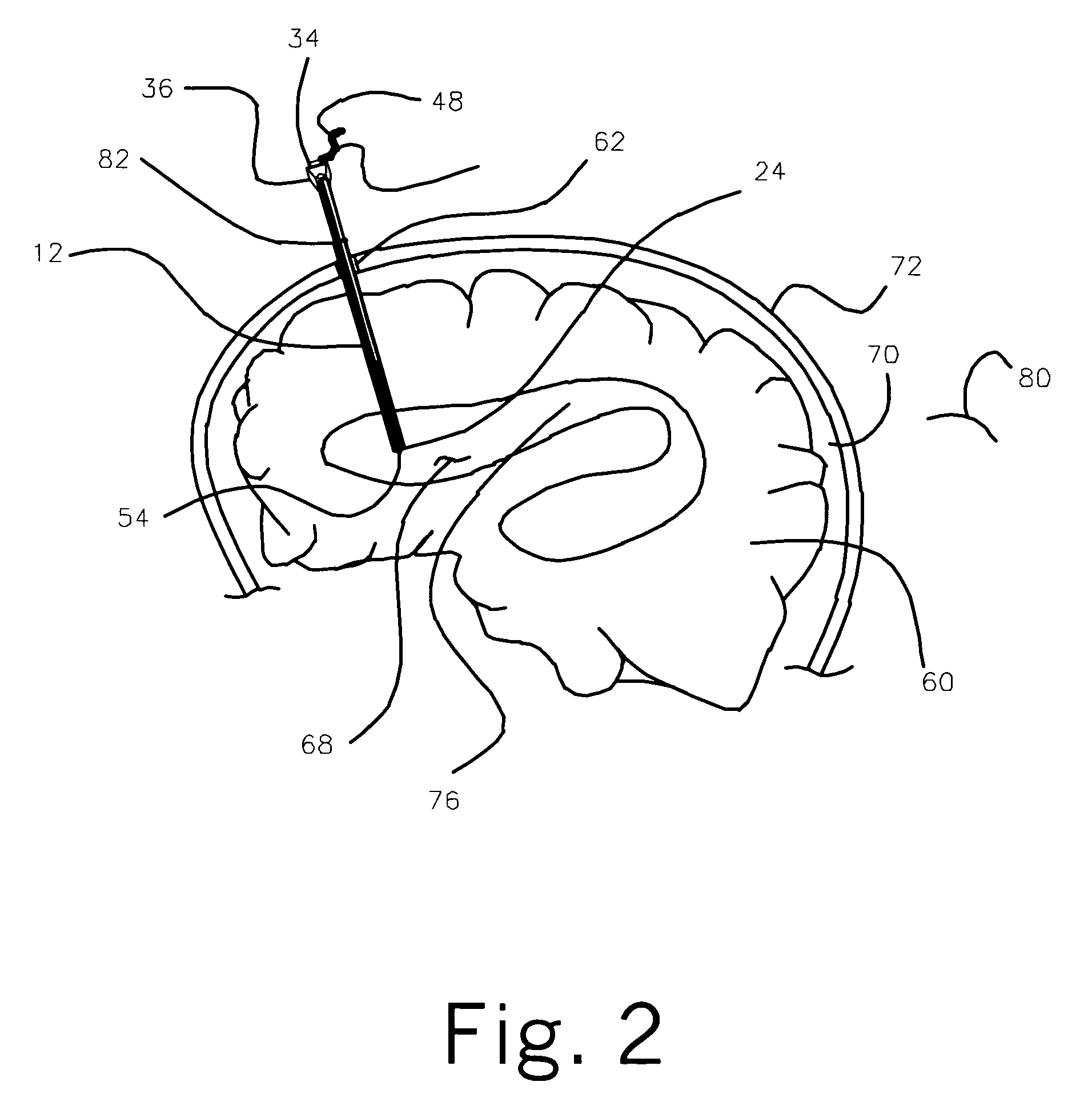Medical device and method for temperature control and treatment of the brain and spinal cord
a medical device and temperature control technology, applied in the field of medical devices, can solve the problems of direct injury to the central nervous system (cns) tissue, death of the tissue, irreversible damage, etc., and achieve the effects of rapid and accurate insertion of the instrument, rapid transfer of learning skills, and unparalleled accuracy within minutes
- Summary
- Abstract
- Description
- Claims
- Application Information
AI Technical Summary
Benefits of technology
Problems solved by technology
Method used
Image
Examples
Embodiment Construction
[0056]With reference to FIG. 1, there is shown apparatus 30 in accordance with the present invention generally including a conduit 12, a stylet 14 and an elongated cooling device, or probe, 16 having a balloon 20, shown deflated in FIG. 1.
[0057]The conduit 12 is flexible and hollow with a distal end 24, a proximal end 26 and a lumen 30 for insertion of the stylet 14 and device 16, as hereinafter described, side ports 16, 18, 20 may be provided in the conduit 12.
[0058]The stylet 14 includes a light source 34 disposed at a proximal end 36 of the stylet 14 along with a focusing element 42. Power to the light source 34 is provided through lines 46, 48.
[0059]The stylet 14 includes fiber optics 52 communicating with a lens / camera 54 disposed at a distal end 56 of the stylet 14.
[0060]As illustrated in FIG. 2, the stylet 14 is inserted into the conduit 12 and a distal end 24 of the conduit 12 penetrates brain tissue 60 through a surgical opening 62. As shown in FIG. 2, the distal end 24 res...
PUM
 Login to View More
Login to View More Abstract
Description
Claims
Application Information
 Login to View More
Login to View More - R&D
- Intellectual Property
- Life Sciences
- Materials
- Tech Scout
- Unparalleled Data Quality
- Higher Quality Content
- 60% Fewer Hallucinations
Browse by: Latest US Patents, China's latest patents, Technical Efficacy Thesaurus, Application Domain, Technology Topic, Popular Technical Reports.
© 2025 PatSnap. All rights reserved.Legal|Privacy policy|Modern Slavery Act Transparency Statement|Sitemap|About US| Contact US: help@patsnap.com



